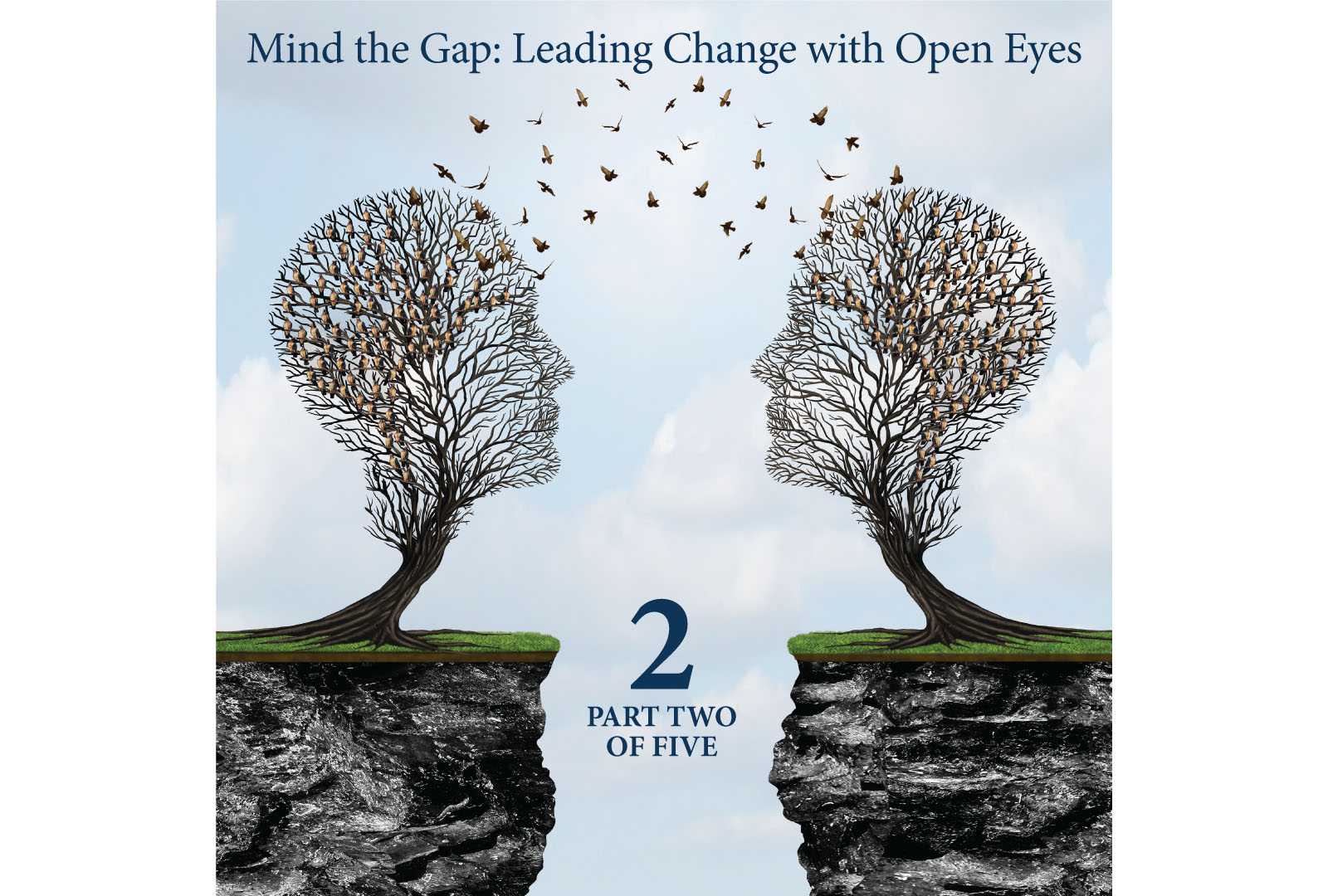Mind The Gap: Leading Change With Open Eyes – Part Two: How the Gap Shows Up
“We’re good at change. It’s business as usual and not an issue here.”
“We invest in resilience training because we know our people can use support in building this muscle.”
“We just need to get through these next few phases (restructures, layoffs, etc.) and then the team will adjust.”
We started this blog series by examining how leaders at the top are often, to varying degrees, disconnected with the effectiveness of their change effort and its impact on their teams. The comments above are from executives I’ve spoken with over the years, all well-intentioned and all assuming their teams would adapt and go with the flow. But if you move down a company’s organizational chart a level or two you will often find individuals and teams whose reality is much, much different.
I was recently on a Zoom with two executives working for a global tech company. They were in the midst of restructuring their division but assured me all was well. This, despite the fact that change decisions being made by them in Seattle would primarily impact teams in Barcelona. I remarked that managing such a huge change effort must be difficult to do from afar and asked how the Spanish team was doing. One executive rather dismissively replied, “Our people are so used to change. It’s in our DNA.” The other echoed with, “We know what to expect and how to handle it. This is what we do – change is not a problem for us.”
After the call, I almost felt foolish for raising the rollout as a potential issue because I know from working with similar companies that great importance is placed on the values of agility, adaptability, and innovation. But the “change is not a problem here” mindset of these particular executives worried me. It minimized the impact on their people and created a potential blind spot for learning and innovation. My worries were confirmed the next morning when I talked with Gabriela, the client’s head of HR in Barcelona. She told me the rollout of the restructure had created undue chaos for the local team. Cultural missteps along the way exacerbated an existing low level of trust in the “American leadership team”, which the Barcelona team had already tagged as being tone deaf to culture and local market expertise. She also shared that their beloved Barcelona-based general manager of ten years had just given his resignation, further fueling the team’s feeling of uncertainty and instability.
Gabriela represents so many leaders I see who sit at the intersection of strategy and implementation of organizational change – let’s call them middle managers – and often tell a story that is very different from that of senior leadership. She is on the other side of the gap and her comments are typical of those I’ve heard from middle managers describing change from their vantage point:
“I’m in a tough position. I’m not brought into the decision making at the top, but I have to face my team, who hear rumors about changes coming. It’s hard to maintain my credibility.”
“Due to lack of communication and not bringing the right people into decision making we lost some crucial talent in our last layoff – now we’re playing catch-up.”
“It’s been months of waiting to find out what’s going to happen. My team is anxious, I’m anxious, and it’s really hard to stay focused on work.”
“I’m worried people who do not understand our domain area will make the wrong calls impacting our team’s success and the end product. I’m already seeing this happen and when I raise concerns no one seems to be listening.”
These statements stand in such stark contrast to those from the leaders quoted at the beginning of this blog, don’t they? As you might imagine, or have perhaps personally experienced, the cost of the perception-reality gap is that it inhibits learning about and implementing crucial pivots needed for success with people, process, and projected business outcomes. In short, you risk rolling out a suboptimal change effort, creating unnecessary costs for people and the business. As a leader, one of the simplest and most effective ways to minimize this risk is to put yourself in the shoes of those who are impacted by the change. Imagine how it feels right now to experience the change from their vantage point. What questions might they be asking? How may they be interpreting certain components of the change? Consider what they may have lost as a result of the change (e.g. team members, trusted peers, mentors, role clarity, a purposeful mission, etc.). Better yet, ask them. When you are receptive and curious, you are certain to learn.
In the next blogs we’ll explore some of the systemic and human dynamics that create this gap, starting with the interplay of senior executives’ role demands and unconscious bias. For now, consider the reflection below.
Leadership Reflection
Think about a current change underway in your company. Where do you see the most connection and where could there be more connection between those at the top and their teams? What would be the impact of greater connection and how can you facilitate that?

